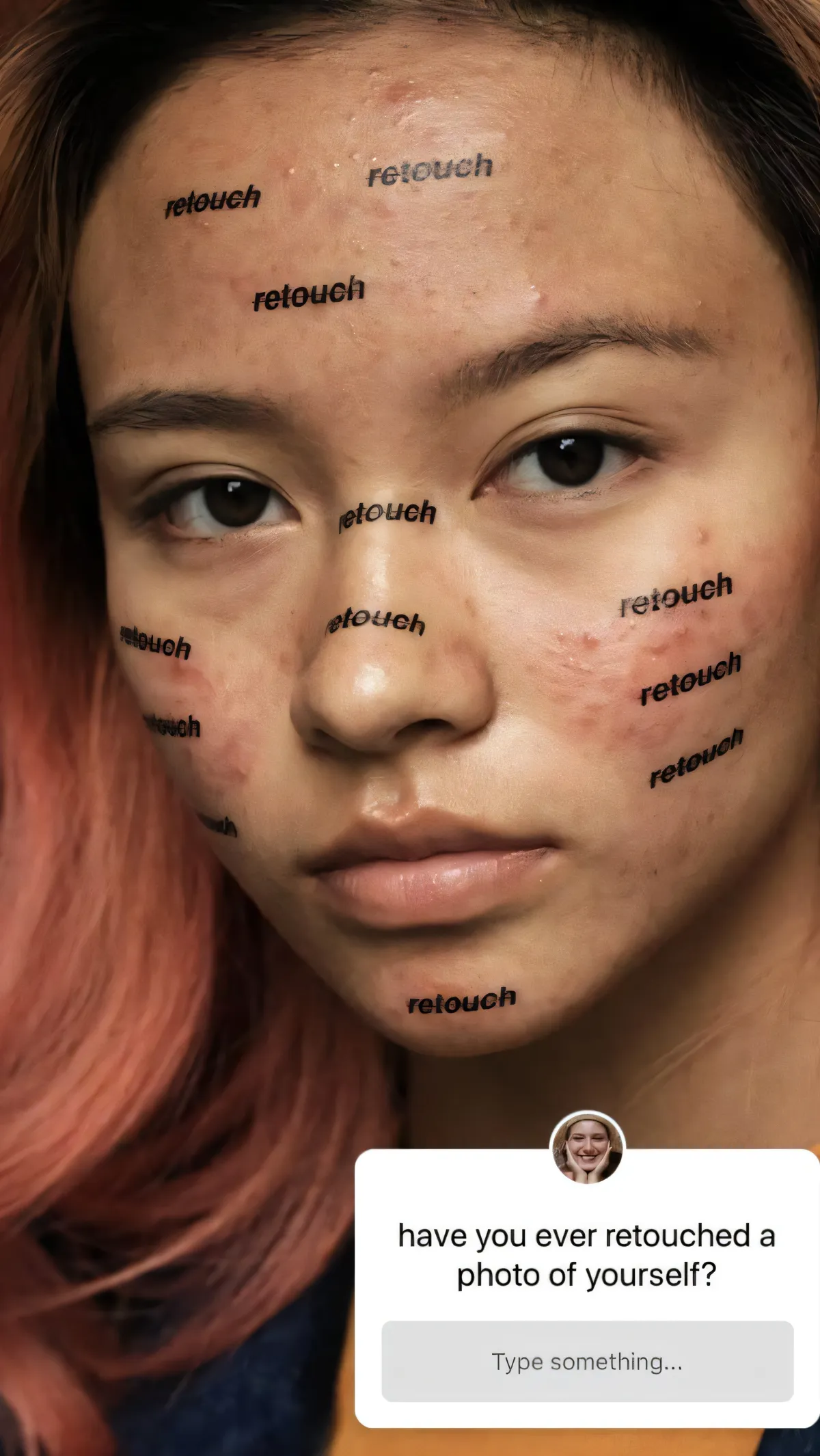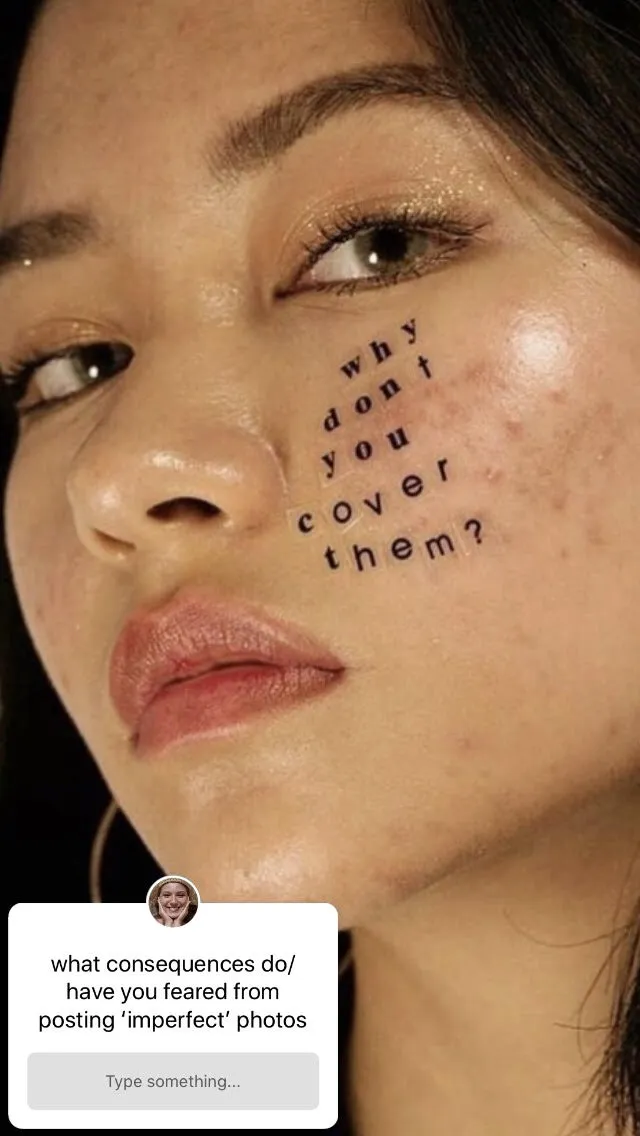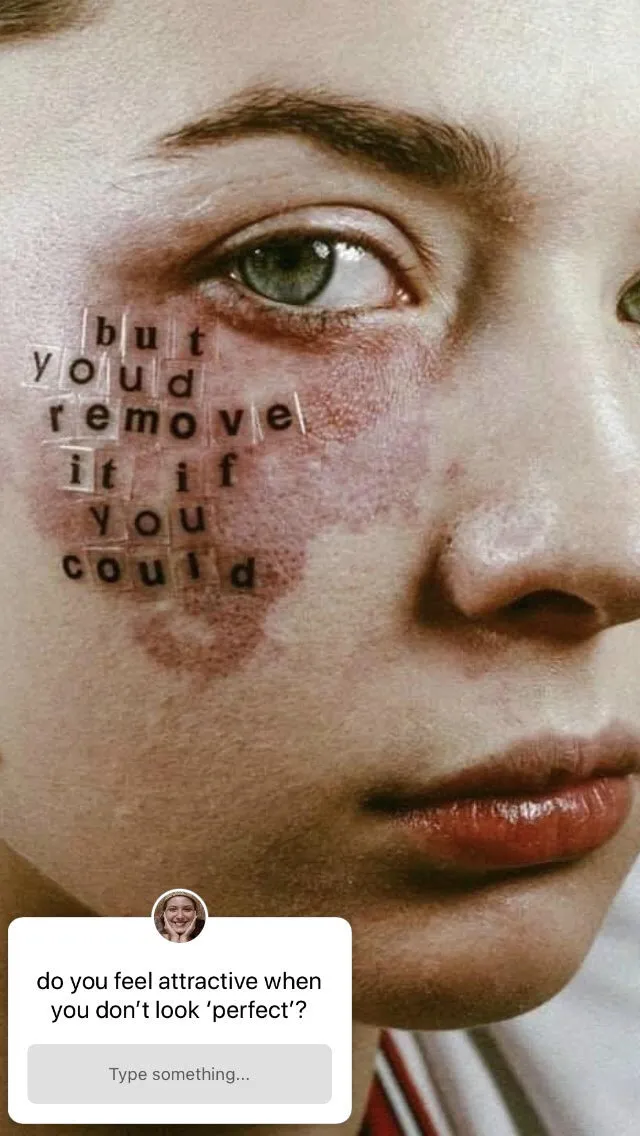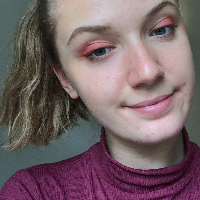Facetune And Filters: A Look Into Photo Manipulation Online
Entering the term ‘Facetune’ into my search bar, I am met with the following auto-fill suggestions:
Is Facetune worth it?
Is Facetune safe?
And naturally – is Facetune free?
When weighing up whether something will make for a worthwhile investment, we are faced with the task of ascribing meaning. What does it mean for something to hold worth for us? How do we equate value to our surroundings? In a world where each of us is navigating life online, this endeavour to establish what enhances our experience and what does not has taken on a whole new dimension.
Social Media and the Rise of Photo-editing
On average, people are spending upwards of 1,300 hours per year engaging with the six top social media platforms – meaning that we are all dedicating significant portions of our time to consuming the content available on these apps.
Whilst that may sound harmless on the surface, our rate of content consumption is unparalleled in its incline. Daily social media usage has risen from just an hour in 2012, when a number of now established platforms like Instagram and Snapchat were first emerging, to over two hours per day in 2020.
These figures - combined with a society that has learned to experience first, post second - have created a culture where photo-editing software like Facetune can thrive. But why? How is it that platforms designed to let us share our lives have created this need to fabricate perfection, and even generated demand for the tools to do so?
I turned to Instagram to find out.
As part of my research, I queried 170 of Instagram’s staggering 1.074 billion users about how they share content on the app.

My first question asked users whether they had ever retouched a photo of themselves – to which every individual that partook responded yes.
Is that not astounding, that the user pool of an application claiming to “capture and share the world's moments” feel pressured to retouch their selfies before hitting post? Does that not indicate that something about the way we engage with social media has grown rotten over time? And as with all rotten things, that there is something festering at the core of our relationship with it?
Media scholar Thomas Knieper outlines what many users have come to identify as the heart of the problem: Individual media organisations base their content regulations on what they believe will be well received by audiences and personally “deem acceptable”.
But when social media platforms profit off of each second of your usage – purposing, as described by Forbes writer Kalev Leetaru, each moment of “unwitting users’ lives” to selling “hyper-targeted advertising” – it begs the question of whether your best interests fall amongst their priorities at all.
To break it down, if Instagram monitors how long you spend looking at a post that appears on your ‘For You’ page and concludes that you engaged significantly with it, a spot on your ‘For You’ page will be offered to a company selling related wares or services. So, if you spend longer than the average flitting scroll on a post showing a weight loss supplement or waist training apparatus, those same products are going to appear like phantoms on your feed at a later date.
How Social Media Algorithms Feed Insecurity
If we apply this function of the algorithm to all of the content we view on social media, we begin to understand why we feel unworthy of posting without the edit:
We unconsciously teach social media algorithms to broadcast our insecurities back to us.
If I take somebody with body image issues, for example, Content that showcases the body type that triggers a person’s insecurities might elicit a greater reaction from them than averagely recorded, resulting in a longer time spent engaging with this kind of content. This would signal to the algorithm that this kind of content succeeds at engaging the user for extended periods of time, prompting it to flood their ‘For You’ page with more of it.
The more insecurity triggering content the user consumes, the further they fall into cycles of comparison and shame, and the deeper the belief that only one body type belongs on social media embeds. And from that seed of belief, springs the urge to manipulate their own photos.
What are the implications of this for the way we feel about posting online?
When asked what they feared from posting imperfect photos, one Instagram user replied:
“Not getting enough likes, people thinking I am not beautiful, rejection.”

This triad perfectly encapsulates what happens when you combine for-profit technology, self-centered ethics, and the human user’s need for acceptance and appraisal.
But social media did not start this way.
People often reminisce about how Instagram began as a place for people to share photos of their lunch with the flourish of a sepia filter. Snapchat entered the scene for its fun-loving filters. Now both applications come under frequent fire for their promotion of unrealistic beauty standards and permittance of manipulated content.
Putting Snapchat under the spotlight, its filters have come to increasingly project the unattainable. Skin-smoothing filters remove the texture from our faces whilst others alter our features to reflect the Eurocentric beauty ideal.
It only takes pointing a lens in our direction to transform our faces from something distinctly recognisable to a big-eyed, thin-nosed, and plump-lipped replica of the thousands of filtered selfies swarming our feeds. And the more people get sucked into using them, the more alienating filters become available for use – with over 100,000 filters having been submitted to Snapchat’s circulation since the app’s launch.
With Snapchat’s array of filters having been viewed some 2.5 billion times by their users, the question of implications existing for those aiming at the camera arises.

When asked whether they feel attractive when they fall short of the flawless ideal filters like these uphold, one Instagram user responded:
“I guess, but I don’t ever feel perfect.”
Whilst it is human nature to strive for perfection, existing in a world where we are consuming curated media on a constant basis has exacerbated this instinct to toxic levels. Now, if we are not producing or imitating perfection ourselves, we are left feeling substandard and inferior.
Is there anyone brave enough to strike out of this cycle?
The Conscious Intervention
Amongst the conscious consumption community, there are people dismantling this illusion of perfection and sharing their faces and bodies in their unedited glory:
Figureheads like blogger Sarah Nicole Landry and journalist Danae Mercer have paved the way for all of us to begin accepting ourselves as we come.
Landry, a mother of four and survivor of life-altering body image issues has shared her pre-pregnancy and postpartum body in an effort to break the stigma surrounding women’s appearances. Landry’s unapologetic shots are the point-blank reminder we need to stop perceiving our bodies as something that needs our control, curation, or discipline.
View this post on Instagram
Perusing Landry’s feed, captions like these underscore up-close shots of the very features we’ve learned to consider shameful:
“I used to only take pictures of myself as a before or as an after. So it only feels right now to take photos to show me living – after the after.”
Mercer, too, is determined to expose the reality behind the ‘after’ shots we consume online.
In one of her recent posts, Mercer shares a video of herself in a bikini shot in two different ways. In the first clip, Mercer stands in a relaxed pose – whilst the second shows her with “hips popped back”, “core tight” and “knees rotated in” to elongate her frame.
Alongside these posing techniques, Mercer exposes the influencer trick of using her camera’s wide lens to achieve the effect of “shrinking everything into the center of the frame” – achieving a smaller physique through camera manipulation alone.
View this post on Instagram
These women are members of a community striving to expose the realities of human bodies and faces when they’re not being manufactured for consumption. These women are working to recentre our understanding of worth within ourselves – not photo-editing software that sustains an outside illusion at the expense of our inner peace.
What can we learn from their example?
A message from Mercer herself points us in the direction in the right kind of takeaway:
“Your REAL, RAW self, with all your wobbles, all your cellulite, all of your soft insecurities and powerful strengths, deserve to show up all the same.”
Conclusion
The lesson we can carry from this examination of social media and photo manipulation is that whilst Facetune isn’t worth your investment, staking in self-love that doesn’t fade once the filter disappears is.
So, rather than debating whether you want to pay $9.99 per month for an all-access subscription to Facetune’s editing tools, why don’t you hit follow on an influencer demonstrating why natural should be the norm?
Let's shine a light on our real selves and move away from the social media exploits.
Opinions and Perspectives
Great article but I wish it had discussed the impact on dating and relationships too.
Started following both Sarah and Danae after reading this. We need more authentic content creators.
Makes you wonder what all this filtering and editing is doing to our perception of reality.
The connection between profit motives and beauty standards is something we dont talk about enough.
Following body positive accounts has helped me so much with my own self image issues.
I appreciate the article pointing out how this affects our self worth but breaking free from it isnt easy.
Was anyone else surprised by how much time we spend on social media? 1,300 hours is basically a part-time job.
That stat about every single person admitting to retouching photos is both shocking and completely unsurprising.
Good intentions aside, I still feel pressure to edit my photos when everyone else looks so perfect.
Reading this made me go through my photo gallery and delete all my edited versions. Keeping it real from now on.
Trying to explain to my teenage daughter why she doesnt need filters is getting harder every day.
Never thought about how much time I spend looking at perfect bodies feeding into what shows up in my feed later.
Love seeing more people embrace their natural selves online but its still such a small percentage.
The article makes great points about societal pressure but lets be real, these apps arent going anywhere.
Anyone else notice how everyone on Instagram is starting to look exactly the same?
I deleted Facetune last month and honestly feel better about myself already.
Those 100,000 Snapchat filters mentioned in the article are mostly just variations on the same unrealistic beauty standard.
What bothers me most is how young kids are when they start using these filters now.
The bit about teaching algorithms our insecurities really got to me. Going to be more conscious about what I spend time looking at.
I wish more people would talk about how these editing apps affect men too. We feel the pressure just as much.
Interesting point about platforms profiting off each second of usage. Makes you think twice about mindless scrolling.
Sometimes I look at old unedited photos and think they actually look better than the overly processed ones we see now.
The cycle of insecurity feeding algorithms feeding more insecurity is spot on. Its like a toxic feedback loop.
Been following Danae Mercer for months and her content has genuinely helped me feel better about my body.
That Forbes quote about unwitting users lives being used for targeted advertising is chilling. Were all just products to these companies.
I understand the appeal of Facetune but at what point does editing become straight up deception?
This really made me think about my own social media habits and how much time I waste trying to look perfect in photos.
The comparison between old Instagram and current Instagram culture is stark. We've lost something genuine along the way.
I work in social media and the pressure to maintain a certain aesthetic is exhausting. Even my coffee needs to look perfect.
Its interesting that we criticize magazines for photoshopping models but we all do it to ourselves now.
The cost of Facetune subscriptions could be better spent on therapy to address why we feel the need to edit ourselves in the first place.
Seeing those real postpartum body photos from Sarah Nicole Landry helped me accept my own body changes after having kids.
The mental health implications of this constant pressure to look perfect online are serious. We need more discussions about this.
Love what Sarah Nicole Landry is doing but it takes real courage to post unedited photos when everyone else is so perfectly curated.
A friend once showed me her before and after Facetune photos. I was shocked at how different she looked, yet everyone just accepts this as normal now.
Finally someone pointing out how these beauty filters all conform to Eurocentric standards. Its problematic on so many levels.
The section about algorithms feeding our insecurities back to us was frightening. Makes me want to be more mindful of what I engage with.
Honestly I think a little photo editing is fine. Nobody posts completely raw photos anymore.
I feel caught between wanting to look my best in photos and staying authentic. Where do we draw the line?
That quote about being afraid of not getting enough likes really resonated with me. Its sad how much validation we seek from strangers online.
We really need to stop normalizing facial filters for kids. My younger sister thinks she needs them for every single photo.
I actually cancelled my Facetune subscription after reading this. Going to try embracing my natural self more.
Those stats about social media usage increasing from 1 hour to 2 hours daily since 2012 are wild. Wonder what the numbers will look like in another decade.
The business model of these platforms is the real problem. As long as they profit from our insecurities, nothing will change.
That Danae Mercer video about posing techniques was eye-opening. I had no idea how much camera angles could change someone's appearance.
I struggle with this daily. I want to post natural photos but find myself reaching for editing tools almost instinctively.
The part about Instagram starting as a place to share lunch photos made me laugh. Remember those awful sepia filters we all used?
Interesting how every single person surveyed admitted to retouching their photos. Makes me feel less alone but also sad about the state of things.
I appreciate that this article breaks down how algorithms actually work. Never thought about how my own insecurities might be feeding into what content I see.
Those Snapchat filters are honestly getting out of hand. I barely recognize myself or my friends anymore when we use them.
The statistic about people spending 1,300 hours yearly on social media really hit home. I'm definitely part of that number and it makes me uncomfortable thinking about it.
Just spent an hour scrolling through Sarah Nicole Landry's feed and wow, her honesty is so refreshing. We need more influencers keeping it real like this.
I've noticed such a dramatic shift in how people present themselves online. It's scary how normalized photo editing has become when social media was meant to be about authentic connection.
